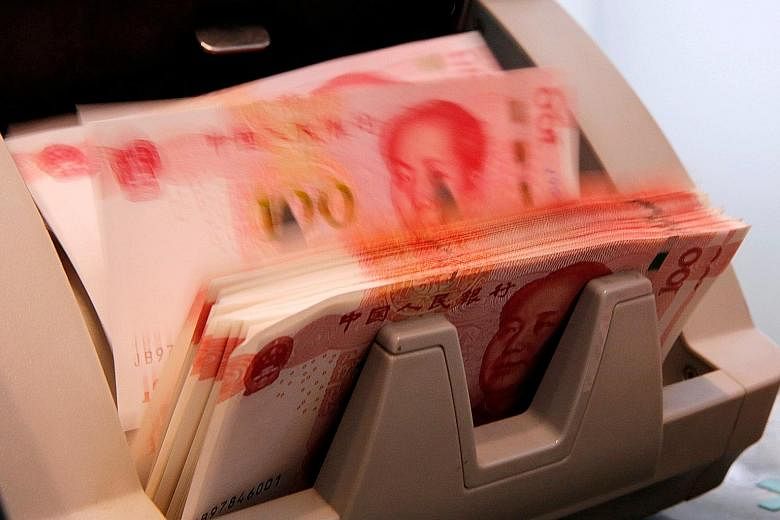The Monetary Authority of Singapore (MAS) will include its yuan financial investments as part of its official foreign reserves starting this month, the central bank said yesterday.
"This move recognises the steady and calibrated liberalisation of China's financial markets, and the growing acceptance of yuan assets in the global portfolio of institutional investors," it said in a statement.
Mr Heng Koon How, Asia-Pacific senior foreign exchange investment strategist at Credit Suisse Asia Pacific, said: "This move by the MAS to include yuan assets as part of Singapore's financial reserves is widely expected. From Singapore's point of view, including yuan assets is a prudent diversification of reserves.
"After all, this reflects the significance of China as Singapore's largest trade partner. In addition, this is also indicative of the growing significance in terms of financial ties, given that Singapore is now a large offshore yuan clearing and settlement centre."
UOB economist Francis Tan said the MAS is sending a good and strong signal "to the ground, the private sector and also our Chinese counterparts. If you were an official in the People's Bank of China, you would appreciate the fact that Singapore is recognising the yuan financial investments".
This comes after the International Monetary Fund (IMF) announced in November last year that the yuan met the criterion of a freely usable currency, and would be included in the Special Drawing Rights (SDR) basket from Oct 1. This means the yuan joins the US dollar, the British pound, the euro and the Japanese yen in an elite club.
The SDR's influence in global finance is far-reaching, and helps governments in protecting their financial reserves against global currency fluctuations.
Mr Tan said: "Since the IMF has already said the yuan will be included in the SDR, it's great we are recognising the fact that China is the up-and-coming nation, and us being one of the official yuan centres among many is also sending a signal that we want to improve the relationship with China."
Mr Heng said it is likely that, at the onset, the MAS will allocate more to the Chinese onshore fixed-income market, particularly the sovereign benchmarks.
"In recent months, the Chinese authorities have indeed simplified the investment process for foreign central banks and financial institutions to invest in the onshore mainland fixed-income market."
MAS deputy managing director Jacqueline Loh said China's calibrated financial liberalisation in the past year has encouraged growing international acceptance of the yuan. "An example is the set of initiatives between China and Singapore announced in November last year to further expand channels for cross-border yuan flows and support the greater use of the yuan outside China. The inclusion of yuan assets in MAS' official foreign reserves is timely," she noted.
HSBC Singapore's chief executive officer Guy Harvey-Samuel said: "The move is also in line with the trend of commercial cooperation between China and Singapore. We can expect the improved yuan liquidity and stability to benefit Singapore businesses in the long term and boost Singapore's standing as a renminbi centre in the region."
He added that the bank's research has shown that 32 central banks now invest in the yuan, compared to three in 2012.
The regional research head, Asean, at Standard Chartered Bank, Mr Edward Lee, said that "as China continues on its measured capital account liberalisation, usage of yuan will only increase... We forecast that by 2020, China will be settling about 50 per cent of its trade in yuan."


